Why chickens stopped laying eggs in the fall
Many poultry breeders are wondering why chickens stop laying eggs in the fall. The main reasons for this phenomenon are the season, changes in diet, breed, type of food, age. In other words, there are a lot of factors that the laying hens do not rush well in the fall.
Content
Reasons affecting egg production in chickens autumn
Those who raised chickens remember how they waited for the first egg - time passed and suddenly it was empty. Chickens have suddenly stopped laying testicles or are not performing well. Why does this happen?
Experts identify several factors in reducing egg production in chickens. Some of the reasons why chickens fly poorly are indeed directly related to the onset of autumn.
Daylight hours, as well as the season
In natural nature, the birds of the chicken order rush only in spring or summer... Everything is clear here - they rush to reproduce.At this time, air temperature, variety of food have a great effect on the growth of chicks.
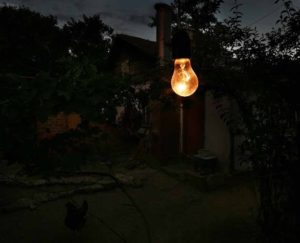
A decrease in daylight hours is a sign of coming autumn for chickens, so they stop rushing. There are many breeds that require 14-16 hours of daylight.
Overstrain and stress
A feathered bird in this state lays damaged testicles, poorly or not at all. A big fear, lack of food or water, the appearance of a rooster, moving to a new place - all this does not reflect in the best way on the egg production of the hen in autumn.
Unhealthy food
Usually the skeleton of a laying hen has 20 g of calcium, it spends about 10 percent on 1 egg. She has a certain reserve of calcium in the body, but if she does not receive it in the required amount with food, then her reserves will soon become scarce.
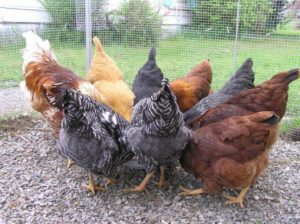
Lack of calcium is another factor affecting egg production in chickens in autumn.
Autumn molt
Molting is a normal process with short daylight hours, but it can start unexpectedly. Stress can also intensify it. Most chickens molt once a year, most often in the fall.
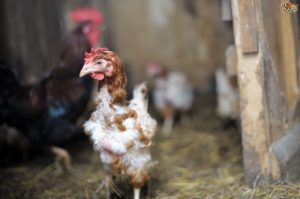
Seasonal molting begins in the second year of the birds' life. The formation of new feathers, the laying of eggs requires a large waste of the chicken's body reserves. At this time, it is bad or completely stops rushing. As a rule, this happens in the fall. Molting continues for 2 months.
Diseases and parasites
The defeat of infectious diseases and parasites are a factor in reducing egg production.
Ticks, bugs feed on the blood of the laying hen, they attack more often at night, and during the day they hide in the insoles or crevices of the hen house. They are very persistent, they can be without food for a long time, spend the whole autumn and winter in a shed where they do not drown. They can get into the chicken coop with new individuals, with a tool, from a person's clothes or shoes. They can also be carried mice and rats.
Defeat occurs through contact between birds. External parasites are very disturbing to the chicken, causing it to severe itching. She cleans a lot, shakes her feathers, eats practically nothing, loses weight.
The parasites inside are round and tapeworms. Infections also include salmonellosis, staphylococcus aureus, typhus, bird flu, and others.
Temperature changes
Very high or low temperatures will also affect the ability of the chicken to lay. This largely explains why chickens do not rush well with the onset of autumn.
Hatching instinct
When the laying hen hatches the testicles, her hormonal levels change so that she stops laying. She is on the nest all day, does not get up, steals testicles from neighbors, if possible.
Age
If the hen does not lay eggs, then she is either too young or old. Usually, laying begins when the bird is six months old. There are small breeds that start laying earlier, and large chickens later.
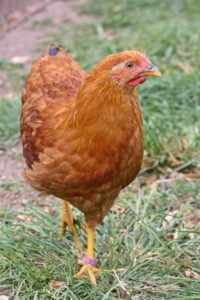
The first year of life is the most egg-producing. Every next year, the chicken's eggs become less.
A great sign that a pullet may start to fly is the shade of its crest - it turns scarlet.
Predators
The reason that the owner does not find eggs can be predators: mice, rats or ferrets.
Eating your own eggs
Chicken pecking of the shell most often begins with an unexpectedly broken testicle in the barn. She begins to eat it, getting used to this taste. Then he begins to peck at all his testicles. This is often due to a lack of calcium in the body of the hen.
The feathered one can fly in a secret place
It happens that a bird carries testicles not in its nest, but in places inaccessible to humans.
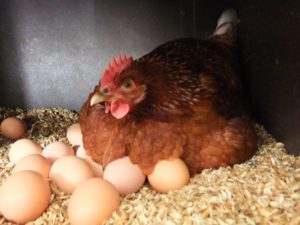
Ways to increase and preserve egg production in laying hens in autumn
If the answer to the question - "Why did the chickens stop laying in the fall?" was given in the previous paragraph, now it is logical to move on to the methods and ways of solving it, in other words, to say what needs to be done so that the chickens rush in the fall.
According to the above reasons for poor egg production in chickens in the fall, it is possible to single out such ways of solving them as:
- Increase daylight hours. By increasing the daylight hours in the barn using electric lamps, you can get the product regardless of the season. However, it must be borne in mind that this reduces the duration of the egg production time of an individual individual. A chicken is born with the required number of eggs, because of this, it will not be able to lay more eggs than nature laid down. When the daylight hours are extended, it is better to do this in the morning, this will not so much affect the daily rhythm of the chicken. Too strong light is not required.
You also need to rememberthat daylight hours should not be more than 16 hours.
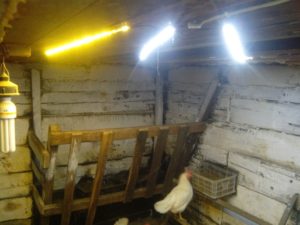
- To relieve stress in the laying henBreeders use regular vinegar on the apple. To restore egg production, you need to pour 20 milliliters of vinegar per liter of water for seven days, monthly.
- To maintain calcium levels in the body feathered, it is important that she has regular access to Ca. It is necessary to give the hen small shells, shells, chalk.
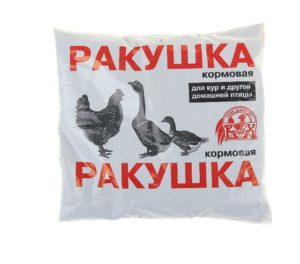
- Basically, the Ca-containing feed is mixed with the main food or a separate bowl is set up for that. You can scatter top dressing around the yard where the hens walk, then they peck it up on their own. It must be remembered that one individual needs to eat 140 grams of feed and 280 milliliters of water per day so that she can lay an egg. If certain feeds are not used, food for laying hens is made from six parts of cereals, three parts of cooked root vegetables, one part of auxiliary additives - vegetable oil cake, sour dairy products, fresh or dry nettle, dandelion. Cereals are crushed, and a wet mixture is made from other components.
- What needs to be done if the chicken starts molt in autumn? First you need to increase the proportion of feed that contains sulfur. These are usually clover, peas, cabbage. The saying "plucked hen" refers specifically to the laying hen, which lays eggs more than others. They begin to molt late enough, in late autumn. It happens that the chicken does not stop laying during the molting period. Then the plucked individual walks in this form until the New Year holidays. She simply does not have the strength to plumage. If the laying hen does not lay eggs well, then it looks great; in such birds, molting begins in the summer, then quickly passes. Professional poultry farmers, having seen a molt in a laying hen, recommend doing the following: remove grain from the diet. Without this, she stops laying eggs, fills faster, starts laying again. After that, they begin to intensively feed them. Using these techniques, you can restore egg production by January.
- If the chicken gets infected an infectious disease or parasite, it must be removed from the rest as soon as possible. To destroy parasites, it is necessary to use drugs purchased from a veterinary pharmacy. You need to process birds and a chicken coop. You can make a bird bath of ash and sand. To combat internal worms, an individual must be processed every six months. The treatment period is 10-14 days. Products from such chickens are thrown away, since they cannot be eaten, and the hatched chickens will be sick.
- To preserve egg production in autumn, care must be taken to temperature in the chicken coop was not lower than +15 degrees. In autumn, in cool weather, the laying hen should have the required amount of warm water.
- Harmful incubation the laying hen can be discontinued and returned to normal laying. To do this, it is placed in a special cage with a bottom from a sieve, without an insole. The cage is raised above the ground at a distance so that other chickens can be seen by the bird. In the absence of normal conditions for incubation, she begins to rush.
- Decide problems with chickens eating their own and other people's eggs, the following recommendations will help: 1) Use a small nail to make two holes in the shell. Blow out all the insides to make the testicle hollow. Fill it with liquid soap and put it in the nest.When the chickens begin to peck at it, they will taste a nasty taste and stop doing it. 2) Increase protein feed. 3) Darken the nest with curtains. The feathered one will not be able to peck an egg, since it will not find it. 4) You can put ping-pong balls in the nest. The chicken will get tired of pecking it up and give up this idea.
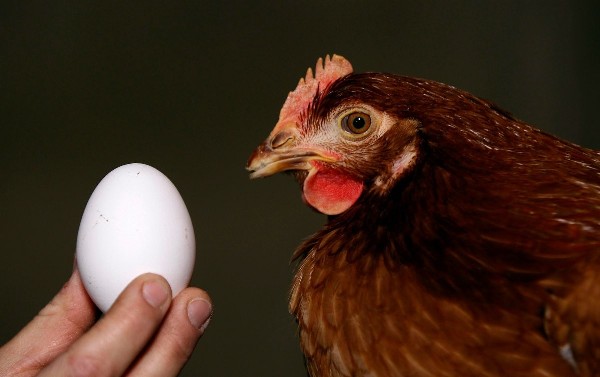
- If layers started laying in secret places, keep them closed in the barn for several days. Then the individual will get used to the nest. Put fake testicles in there, they will make it attractive to the feathered one.
If you want to receive eggs from a hen throughout the year, including in the fall, then monitor the condition of the hens, their homes, use the methods and techniques listed above, then you will always have fresh eggs.

